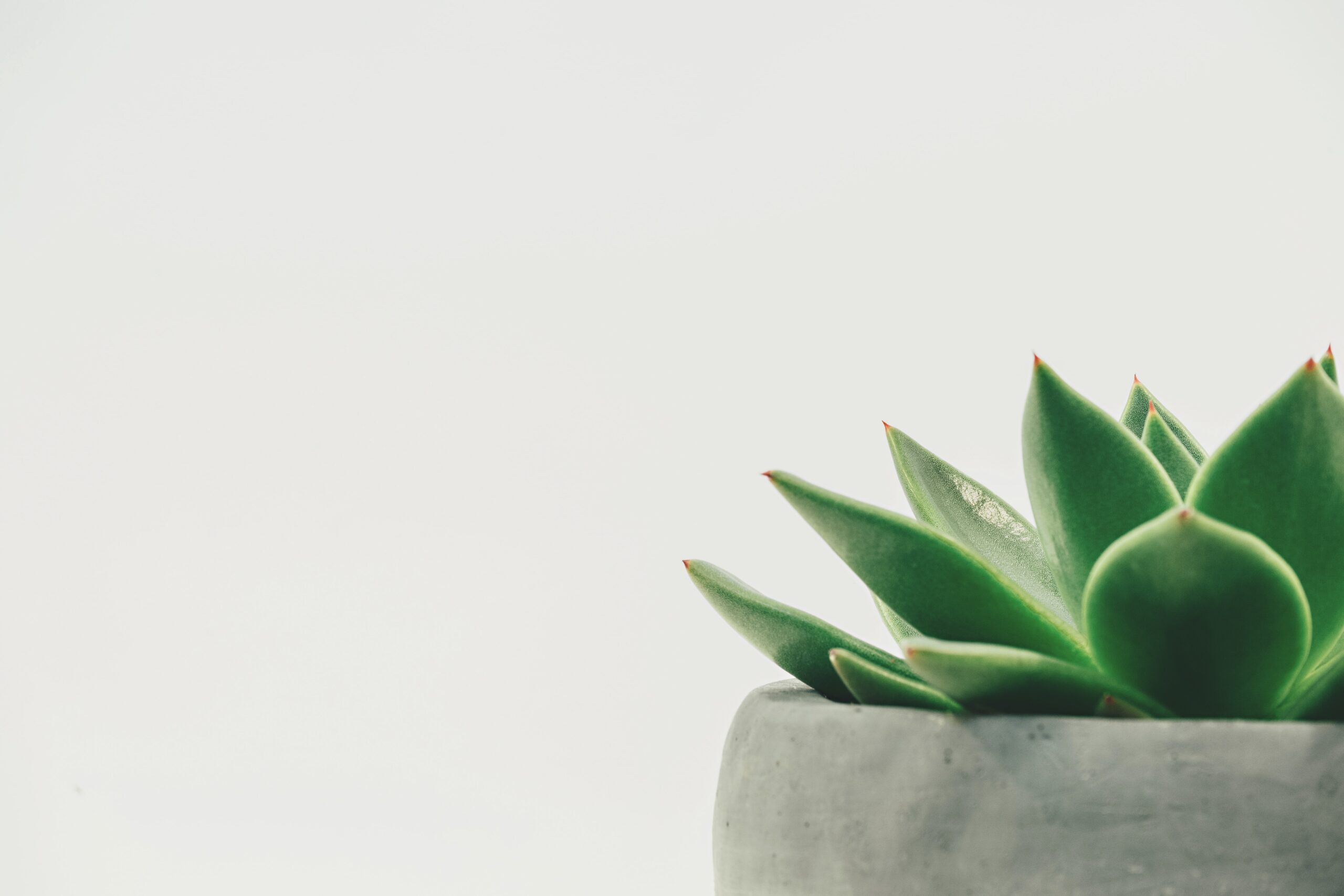Have you ever heard of the African Spear Plant? This resilient, exotic species is a sight to behold. Growing up to six feet tall and reaching three inches in diameter, it can transform any room into an oasis. Its thick, spiky leaves are not only beautiful but also provide a number of benefits that make it a must-have for your home. The African Spear Plant is a powerhouse when it comes to improving air quality and creating a calming atmosphere.
If you’re looking for a plant that can add texture and drama to your decor while doing its part for the environment, then look no further than the Sansevieria cylindrica or African Spear Plant. With this guide, you’ll learn all about how to care for this unique houseplant. You’ll discover exactly what it needs to thrive and how to keep it healthy throughout its lifespan.
The African Spear Plant isn’t just easy on the eyes; it’s easy on maintenance too! With minimal effort and care, this exotic beauty will bring years of lush foliage and beauty into your home. So if you’re ready for an adventure in houseplant care, read on for everything you need to know about growing the Sansevieria cylindrica!
What Is An African Spear Plant?
The African Spear plant is a unique and exotic looking succulent that has become increasingly popular among home gardeners. Its unique cylindrical shape and bright green foliage make it an eye-catching addition to any garden. But what exactly is an African Spear Plant, and where does it come from?
Native to Africa, the African Spear Plant (Sansevieria cylindrica) is a succulent species that thrives in hot, arid climates. It grows up to two feet tall with a sturdy cylindrical stem and spear-like leaves that can reach up to three feet long. The plant’s leaves are usually a vibrant green color with yellowish or brown stripes running along the edges.
Caring for the African Spear Plant is relatively straightforward. It prefers well-drained soil, full sun and regular watering during its active growing season. Regular pruning of older leaves will help keep the plant looking its best and promote new growth. With proper care and attention, this beautiful succulent can bring life and energy to any outdoor space!
Due to its native habitat of Africa, the African Spear Plant is naturally adapted to warm climates with plenty of sunlight – making it ideal for gardens in warmer regions around the world. This resilient species can thrive in many different environments, making it a great option for both beginner gardeners as well as experienced horticulturists!
Where Does The African Spear Plant Come From?
The African Spear Plant, or Sansevieria cylindrica, is an evergreen plant that originates from Southern Africa. It’s a species of the genus Sansevieria, a family known for their drought-tolerant and hardy growing characteristics. This makes it an ideal choice for beginning gardeners who want to bring some extra greenery into their homes without having to spend too much time caring for it.
The African Spear Plant is native to Angola, Namibia and South Africa. It grows in arid climates with little rainfall and can survive in temperatures as low as 18 degrees Fahrenheit. As such, it’s well suited for regions with hot summer months and mild winters. Due to its hardiness and durability, the African Spear Plant has become popular in indoor gardens all over the world.
This species of plant doesn’t require too much maintenance; its soil should be kept moist but not overly wet, and it benefits from the addition of fertilizer once every two weeks during the growing season. The African Spear Plant is also relatively easy to propagate through stem cuttings or by dividing existing plants into multiple pieces. With minimal care and attention, it can make a lovely addition to any home garden or indoor space!
What Does The African Spear Plant Look Like?
The African Spear Plant is a striking species that stands out in any environment. Its long, cylindrical leaves have distinct white stripes, resembling an upright spear or cane. The leaves also boast a waxy texture, making them feel smooth and glossy to the touch. Its unique shape and characteristics make it an ideal choice for those looking to add a little bit of drama to their space.
The African Spear Plant is native to regions in Africa and parts of the Arabian peninsula. It’s particularly well-suited to dry climates, so if you live in a warm climate with low humidity, this could be the perfect choice for you. You can even grow it outdoors if you want – just remember to provide some protection from direct sunlight during the hottest part of the day.
The African Spear Plant is both eye-catching and easy to care for, making it ideal for beginner gardeners or those without much gardening experience. With its hardy nature and low maintenance requirements, this plant has become increasingly popular in recent years – so why not give it a try?
How Do You Care For An African Spear Plant?
“It takes time and effort to cultivate a healthy African Spear Plant, but the payoff is worth it. As the saying goes, ‘The best things in life take time.’ With that in mind, let’s look at how to care for this special plant.
Here are three steps to ensure your African Spear Plant will stay healthy:
- Make sure you give your plant plenty of bright indirect light.
- Water your plant thoroughly but don’t over-water it as it can cause root rot.
- Provide good drainage when you water and ensure your soil is always slightly moist.
Caring for an African Spear Plant isn’t difficult, but it does require consistency and patience. The key is providing the right balance of light, water, and soil so that your plant remains healthy and vibrant. Doing this will help you reap all the benefits of having a beautiful African Spear Plant in your home or garden.
What Kind Of Soil Does The African Spear Plant Need?
The African Spear Plant is an exotic and eye-catching addition to any home, but it has its own specific needs when it comes to soil. Alluding to the power of nature’s resources, this remarkable species has the ability to thrive in a wide range of conditions. But if you want your African Spear Plant to really flourish, then you need to pay attention to the kind of soil you provide.
The best soil for this plant will be sandy and well-drained; something that won’t retain too much water. If you can get your hands on some succulent or cactus mix with added pumice, then you’re already off to a great start. Allowing the soil to dry out completely between waterings is also essential for keeping your African Spear Plant happy and healthy.
To ensure your African Spear Plant is getting all the nutrients it needs, consider adding some natural fertilizer into the growth cycle every now and again. Although it’s not necessary, doing so will help give your plant the boost it needs to really thrive in your home environment – making sure it’s beautiful and stays that way!
With these tips in mind, supplying quality soil for an African Spear Plant doesn’t have to be too tricky. Now that we’ve got that covered, let’s take a look at how much water this unique species requires…
How Much Water Does The African Spear Plant Need?
The African Spear Plant is a truly unique addition to any home or garden. Its long, cylindrical leaves and intricate patterning give it a texturally pleasing and eye-catching appearance. It’s also hardy and easy to care for, making it ideal for beginner gardeners.
When it comes to water requirements, the African Spear Plant needs just enough to keep its soil moist. It doesn’t need frequent watering; allowing the surface of the soil to dry out between waterings is best. But be careful not to let the plant sit in soggy soil or stand in water, as this can cause root rot and other issues.
It’s important to understand that this plant doesn’t tolerate extremely dry conditions well either, so if your environment is particularly dry you may want to increase the frequency of watering a bit. Additionally, use room temperature water when possible, as cold water can shock the roots and cause stress on the plant.
TIP: Place your finger about two inches into the soil before watering; if it feels wet then wait until it dries out before you water again. This will ensure that your African Spear Plant gets just the right amount of moisture!
What Are The Benefits Of Growing An African Spear Plant?
The African Spear Plant is an easy-to-care-for, drought tolerant plant that adds a touch of greenery to any room. Not only does it require minimal maintenance, but there are also many benefits to growing one in your home.
First off, the African Spear Plant can help improve air quality by absorbing toxins like formaldehyde and benzene from the air. It also produces oxygen at night – something that not all plants can do! This makes it a great addition to bedrooms, as it helps create a more comfortable environment for sleeping.
On top of that, the spiky leaves of this plant add texture and interest to any space. Its unique shape will draw the eye and provide visual interest in any area you place it in. And with its low maintenance requirements, you don’t have to worry about taking too much time out of your day to care for it.
But what about propagating an African Spear Plant? That’s next up on our list! We’ll discuss how you can easily propagate new plants from cuttings or division in the following section.
How Do You Propagate An African Spear Plant?
Propagating an African Spear Plant is an absolute breeze! It’s so easy, you’ll be astonished by the results. You can almost watch the plant multiplying in front of your eyes. Here’s how to get it done.
Firstly, you’ll need a pair of scissors or knife, some pots and soil mix, and some patience. Take a healthy stem cutting from the parent plant with at least two leaves attached. Remove any excess foliage, leaving just two leaves on the top. Place the cutting into a pot filled with soil mix, ensuring that it is firmly planted and has enough room to grow. Keep it slightly moist and warm – but not too wet – and within a few weeks your cutting should begin forming roots.
Once this happens, you can repot your cuttings into individual pots for further growth or simply leave them as they are in their current potting mix where they will eventually form an attractive clump of plants. To ensure success, make sure to keep up with regular watering but avoid overwatering as this can cause root rot or other issues in African Spear Plants. Additionally, provide plenty of bright indirect sunlight for optimal growth and health for your propagated plants!
With these simple steps and some luck, soon you’ll have a beautiful set of Sansevieria cylindrica ready to liven up any space!
What Are The Common Pests And Diseases To Look Out For?
Pests and diseases can be a thorn in the side of any gardener, but luckily there are preventative measures we can take to keep our plants healthy and happy. When it comes to African Spear Plants, there are some common pests and diseases that you should look out for. To help protect your plant from harm, let’s take a look at:
- What these common pests and diseases are;
- How to identify them;
- What preventive steps you can take to avoid them.
To start off, the two most common pests that may affect your African Spear Plant are mealybugs and spider mites. Mealybugs appear as white cottony masses on the stems or leaves of a plant, while spider mites form webs on the foliage and suck the sap out of the leaves. Both of these pests can cause discoloration, wilting, and even death in extreme cases. Additionally, fungal diseases such as root rot and leaf spot can also be problematic for African Spear Plants. Root rot is caused by overwatering or poor drainage in pots and will turn roots brown or black, while leaf spot will cause yellow or brown spots on the leaves with yellow halos around them.
Knowing how to recognize these issues early on is key to preventing major damage from occurring. Be sure to inspect your plant regularly for signs of stress such as discoloration or wilting leaves – this could be an indication that something is wrong. Additionally, make sure you’re following proper watering and fertilizing instructions for your African Spear Plant so it stays healthy! By taking these preventive steps you’ll reduce the risk of any serious issues developing in your prized plant.
How Do You Get Rid Of Pests And Diseases On An African Spear Plant?
It is estimated that around 90% of houseplants are affected by pests and diseases at least once in their lifetime. African spear plants (Sansevieria cylindrica) are no exception, so it’s important to know how to get rid of these issues if they arise.
The first step in dealing with pests and diseases on an African spear plant is to identify the type of pest or disease that is affecting it. Common pests include aphids, mealybugs, scales, thrips, and whiteflies. Common diseases include root rot, leaf spot, and powdery mildew. Once you have identified the issue, you can then move onto eliminating it from your plant.
To remove pests from an African spear plant, you can use a variety of methods such as physically removing them with tweezers or a cotton swab dipped in rubbing alcohol or neem oil, spraying the plant with insecticidal soap or horticultural oil, and introducing beneficial insects like ladybugs into the environment. For diseases like root rot or powdery mildew, pruning off affected parts of the plant can help remove sources of infection and improve air circulation around the leaves. You may also need to treat the soil with fungicides to prevent further spread of disease.
These steps should help protect your African spear plant from any future problems caused by pests and diseases. Now let’s look at what you need to do when fertilizing your African spear plant for optimal health and growth!
How Do You Fertilize An African Spear Plant?
Fertilizing an African Spear Plant is like tuning a musical instrument – it’s best to do it regularly for the plant to thrive. Figuratively speaking, it’s like giving the plant the right nutrition to make sure it reaches its full potential.
When fertilizing, use a balanced houseplant fertilizer and follow the instructions on the package. Generally, this would mean applying a quarter-strength solution every other week during growing season (spring and summer). During fall and winter, when growth slows down, you can cut back on fertilizing or discontinue it altogether.
Keep in mind that too much fertilizer can be harmful to your African Spear Plant as well. If you notice any yellowing or browning of leaves, try decreasing the amount of fertilizer you’re using or switching to a different brand with lower levels of nitrogen. Doing so will help your plant stay healthy and strong for years to come.
With proper fertilization, your African Spear Plant will reach its full potential and remain healthy for years to come! Now let’s look at what kind of containers are best for this particular species.
What Are The Best Containers For An African Spear Plant?
Choosing the right container for your African Spear Plant (ASP) is a crucial part of its care. ASPs are low-maintenance plants, but they require specific containers to ensure they stay healthy and vibrant. In this section, we’ll look at what makes a great container for an ASP and provide some tips on how to choose one.
The most important factor when selecting a container for an ASP is drainage. ASPs don’t like wet soil and need proper drainage to prevent root rot. Plastic or terra cotta pots with several holes in the bottom are ideal containers because they allow excess water to escape quickly. Consider the size of the pot as well; ASPs prefer to be slightly root-bound, so choose one that’s no larger than necessary.
Here are some other things you’ll want to consider when choosing a pot for your ASP:
• Durability: Choose a container that’s sturdy enough to handle frequent watering and temperature changes without cracking or breaking over time. • Aesthetics: If you’re growing your ASP indoors, select a pot that complements your home decor. You may even want to choose two different sizes – one for outside and one for indoors – depending on where you plan on displaying it. • Cost: Some materials can be more expensive than others, so consider the amount of money you’re willing to spend when selecting a container for your plant.
With these tips in mind, it should be easier for you to find the perfect pot for your African Spear Plant! And once it’s planted, how can you protect it from the elements?
How Can You Protect An African Spear Plant From The Elements?
Incredibly, an African Spear Plant can be grown outdoors in the right conditions! However, it’s important to protect it from the elements, so that it thrives. In this section, we’ll take a look at how you can protect your African Spear Plant from the cold, wind, and sun.
First, it’s important to consider where you place your African Spear Plant. If you live in an area with very cold winters or hot summers, look for a location that is sheltered from extreme temperatures. You may want to place it near other plants or walls that will provide shelter from strong winds and direct sunlight.
If you’re going to grow your African Spear Plant outdoors during colder months, make sure to mulch around the base of the plant. Mulching helps insulate against cold temperatures and prevent frost damage during freezing nights. Additionally, consider using frost protection covers when temperatures drop below freezing – this will help keep your African Spear Plant warm and safe!
These strategies should help ensure that your African Spear Plant survives all weather conditions. With these tips in mind, you can enjoy watching your plant thrive in its new home – no matter what comes its way!
What Are Some Creative Ways To Display An African Spear Plant?
While it may seem challenging to craft an attractive display for a Sansevieria Cylindrica, also known as an African Spear Plant, the right combination of creativity and effort can create a unique showpiece. With its unique shape and bold coloration, this plant can be used in ways that will surprise and delight your guests – here are some creative ways to show off your African Spear Plant.
One way to get the most out of your African Spear Plant is by creating a terrarium. This allows you to design a miniature garden with your succulent as the centerpiece. You can fill the terrarium with gravel or sand, add rocks or driftwood for contrast, then arrange other plants around the African Spear Plant to create a beautiful display.
If you’re looking for something more modern, consider hanging your African Spear Plant in a macrame holder. This is an especially great idea if you have limited floor space, as it will keep your plant up off the ground while still giving it room to grow. You could also add some colored marbles or stones at the bottom of the macrame holder to give it extra color and interest.
By combining these creative ideas with proper care and attention, you can proudly display your African Spear Plant without sacrificing style or flair. With just a little effort, you can turn this exotic succulent into a conversation piece that will surely draw compliments from friends and family alike!
What Are Some Tips For Growing An African Spear Plant?
Planting and protecting an African Spear Plant can be a challenging but rewarding experience. With proper care and knowledge, you can easily grow a beautiful and thriving specimen! From soil selection to watering schedules, there are many tips that will help you grow this unique plant.
First, pick the perfect spot for your African Spear Plant. This species needs bright indirect light, so don’t put it in a completely dark corner or direct sunlight. It also prefers well-draining soil to prevent root rot. You can use potting mixes specifically for succulents or mix your own with perlite and peat moss.
Once your plant is settled in its new home, you’ll need to water it regularly to keep the soil moist but not soggy. You should also check the temperature where you have it placed as this species likes temperatures between 60-80 degrees F (15-27 C). Feeding your African Spear Plant will give it an extra boost of nutrients and encourage healthy growth. Be sure to use a balanced fertilizer diluted at half strength every 4-6 weeks during the growing season (usually spring through late summer).
Finally, if you want to show off your African Spear Plant in style, consider getting creative with its display! A few ideas include attaching it to a stake or trellis for a vertical effect, or adding colorful stones around the base of the pot for contrast. With these tips in mind, you can successfully grow an African Spear Plant that will bring beauty and delight into your home!
Frequently Asked Questions
Is The African Spear Plant Toxic To Pets?
Ah, the African Spear Plant – one of nature’s most mysterious creations. For centuries, it has been both admired and feared by pet owners around the world. Is it toxic to our beloved furry friends? Let’s take a closer look!
From a scientific perspective, the jury is still out on whether this plant is actually poisonous or not. Many studies have suggested that it is indeed toxic, but there’s no definitive answer yet. However, one thing we do know for sure is that the African Spear Plant’s spiky leaves can be quite hazardous to our pets. So if you want to keep your pet safe, it’s best to err on the side of caution and avoid having too much of this plant around your home.
Here are some helpful tips if you plan on keeping an African Spear Plant in your home: •tBe mindful of where you place it – make sure it’s out of reach from curious pets! •tRegularly check for signs of damage or deterioration in its leaves – these can indicate poisoning •tProvide plenty of ventilation – the plant needs lots of air circulation •tKeep a close eye on your pet – monitor them regularly for any changes in behavior or health
Overall, while we don’t know yet whether or not the African Spear Plant is truly toxic to pets, we can still take steps to ensure their safety while they’re around this intriguing plant. By following these simple guidelines and keeping an eye out for potential danger signs, you should be able to enjoy owning an African Spear Plant without worrying about any risks posed to your pet.
How Much Light Does The African Spear Plant Need?
When caring for an African Spear plant, one of the most important considerations is how much light it needs. Depending on its location, the amount of light a Sansevieria cylindrica needs can vary significantly. It’s important to be aware that these plants need bright, indirect sunlight, making them ideal for growing in window sills or near large windows.
To ensure your African Spear plant thrives, you’ll want to make sure it receives enough light. If placed in direct sun for too long, its leaves may become scorched and start to turn yellow. On the other hand, if it’s not getting enough light then its growth will be stunted and its leaves won’t reach their full potential size. To find the perfect balance between direct sunlight and shade, you may need to experiment with different locations around your home or office space.
Finding the right amount of light for your African Spear plant is key to keeping it healthy and happy. Make sure you’re providing enough bright, indirect sunlight as well as regular watering and occasional fertilizing for optimal growth and care. With a little bit of effort and dedication, you can create a beautiful environment where your plant can thrive!
At What Temperature Does The African Spear Plant Thrive?
The African Spear Plant, a sleek and elegant addition to any home or garden, is an easy-to-care-for and hardy species of houseplant. Its sharp, pointed leaves make it look almost like a spear, and its unique appearance is sure to capture the eye of anyone who notices it. Caring for an African Spear Plant is relatively straightforward – with the right temperature and light levels, it can thrive in many different environments.
Like a bodyguard standing guard at the entrance of a castle, the African Spear Plant needs protection from intense heat and cold. It prefers temperatures between 65°F (18°C) and 80°F (27°C), so moderate climates are ideal for it. If you live in an area that has extreme temperatures, extra precautions may be necessary to ensure your plant’s health.
Fortunately, the African Spear Plant doesn’t require too much effort to keep happy: • Ensure that your plant receives indirect sunlight or bright but filtered light throughout the day • Water moderately – allow soil to dry out slightly between waterings • Mist occasionally to increase humidity levels These steps will help your plant remain healthy while providing all the nutrients it needs.
With just a bit of care and attention, you can help your African Spear Plant thrive in its new environment! With its striking shape and beautiful foliage, this interesting houseplant can bring life into any room or garden – making it well worth the effort you invest in keeping it healthy.
How Often Should I Fertilize My African Spear Plant?
Taking care of an African spear plant can be a rewarding experience. It has the potential to bring vibrancy and life to any home or office. To make sure your plant thrives, it is important to understand the basics of its needs, including how often you should fertilize it.
It’s important to give your African spear plant a nutrient boost every few weeks. This will help them grow strong and healthy! A good rule of thumb is to apply liquid fertilizer diluted in water once a month during the growing season (spring through fall) and every two months during the dormant season (winter). Avoid over-fertilizing as this can lead to nutrient overload, which can cause leaf burn and discoloration. Remember that too much of anything is never a good thing!
In order for your African spear plant to reach its full potential, proper fertilization is essential. You’ll want to make sure you give it quality food on a regular basis. By following the guidelines above and adjusting as needed based on your particular environment, you’ll ensure that your beloved plant will stay vibrant and alive for years to come!
Does The African Spear Plant Need To Be Repotted?
Repotting an African Spear Plant is like turning a page in a book. It’s a necessary step in keeping the plant healthy and growing strong. As with any living thing, a change of scenery can be beneficial for growth and health.
So, when should you repot your African Spear Plant? Generally speaking, it should be repotted every two to three years. If you notice the roots beginning to fill up or overflow from the pot, then it’s time to give your plant some room to grow. When it’s time for repotting, use fresh potting soil or a potting mix specifically designed for succulents and cacti. Make sure that your new pot has good drainage holes at the bottom.
When you’re ready to repot your African Spear Plant, gently remove it from its current container and loosen any roots that may have become compacted during its stay in the old pot. Place the plant in its new container and fill with fresh soil. Water thoroughly but don’t overdo it; too much water can lead to root rot. Afterward, watch your plant closely for signs of stress or shock and make adjustments as needed until things settle down again.
Repotting an African Spear Plant isn’t difficult or complicated; it just requires some mindful planning and attention to detail. With the right soil and adequate drainage, you can help ensure that your plant has plenty of room for root growth so that it can continue to thrive for years to come!
Conclusion
The African Spear Plant is truly a remarkable and unique houseplant. With its ability to thrive in low light, low temperature environments, and easy maintenance requirements, it is definitely a great addition to any home. Not only is this plant interesting to look at, but it can also make a great conversation piece as well.
The fact that the African Spear Plant is not toxic to pets makes it even more appealing for those with furry friends in their homes. This means that you don’t have to worry about your beloved pet ingesting something toxic if they decide to take a nibble from your plant.
Finally, with proper care and maintenance, the African Spear Plant will reward you by flourishing in your home for many years. It’s an easy-care plant that is sure to bring life and beauty into any space. With its exotic shape, unique foliage, and low maintenance needs, the African Spear Plant is a perfect addition for anyone looking for an interesting houseplant!





























